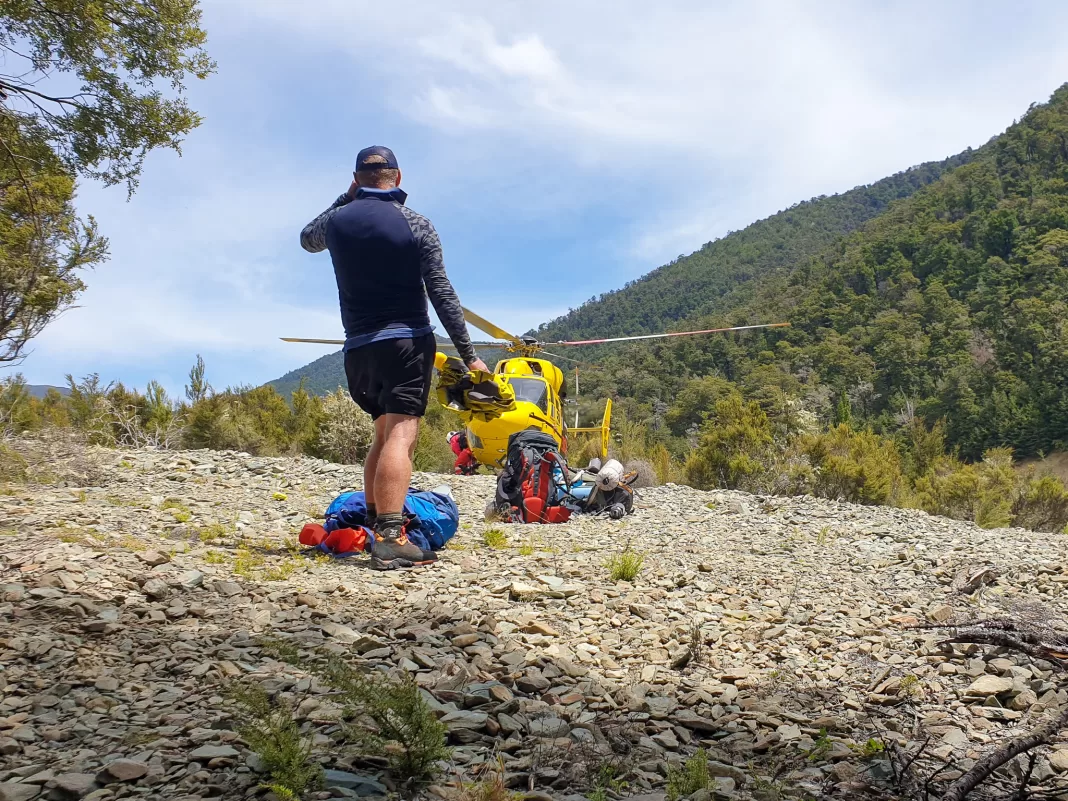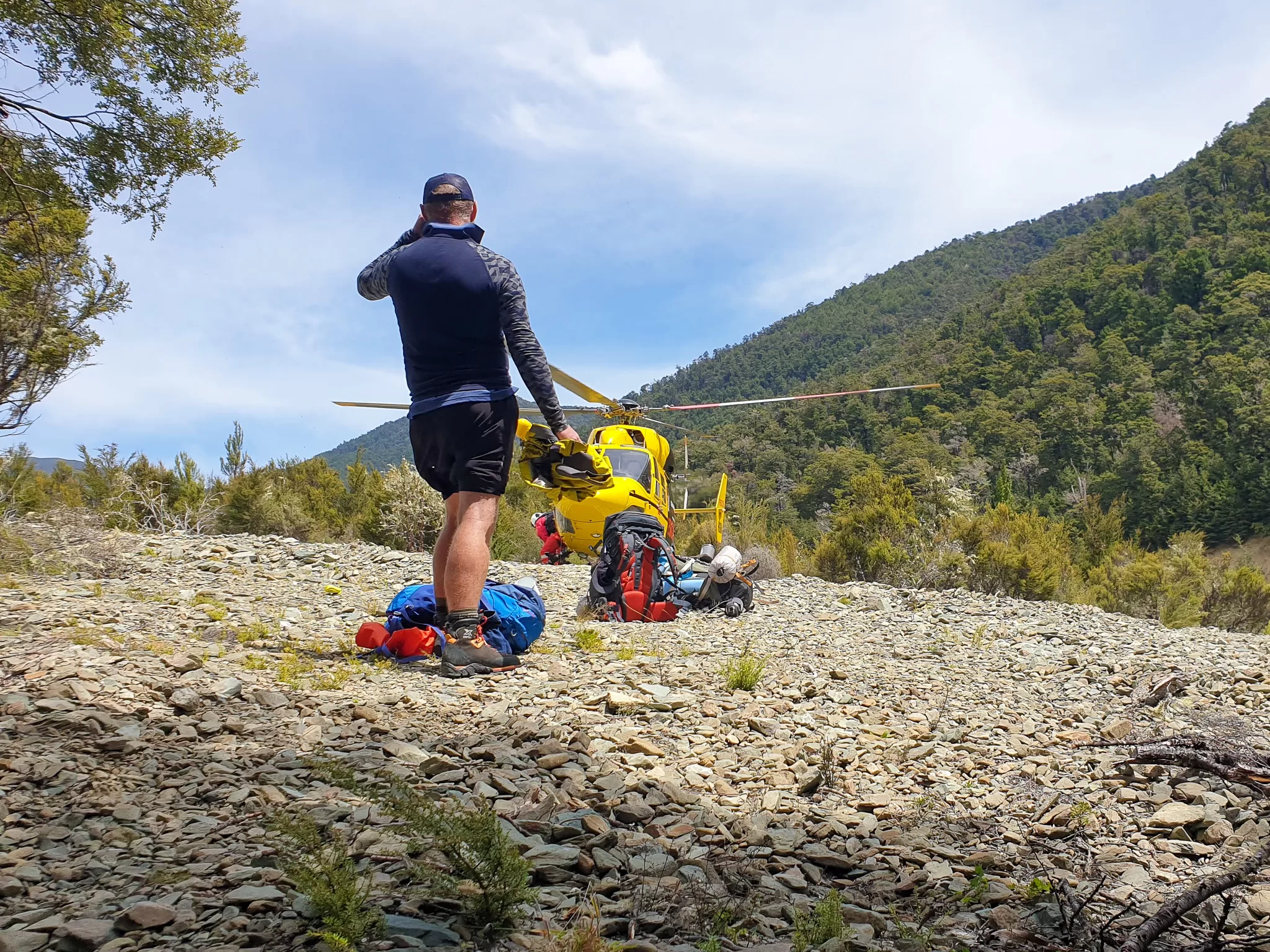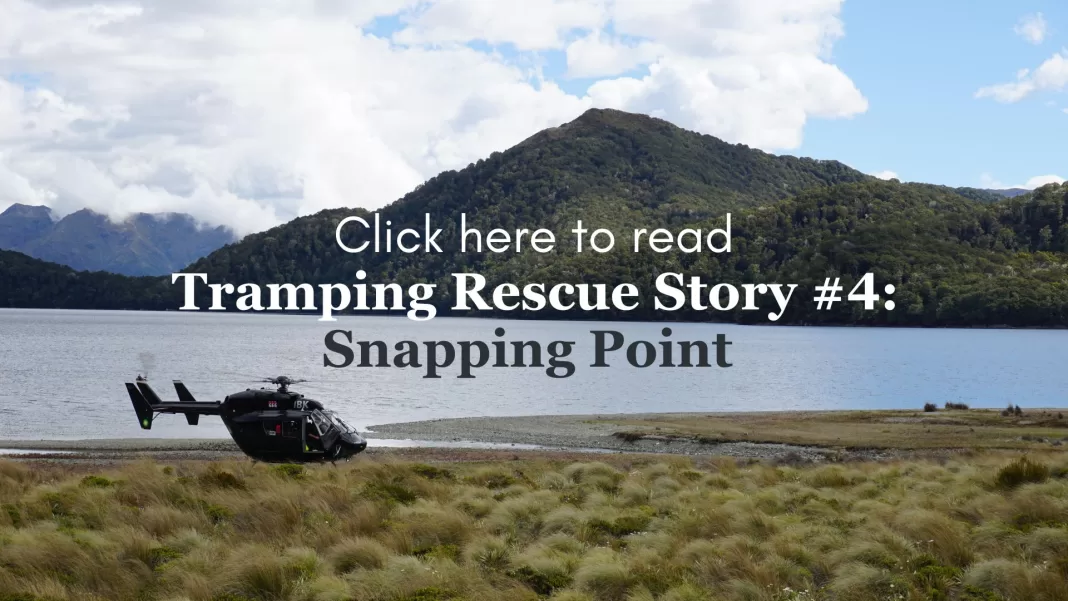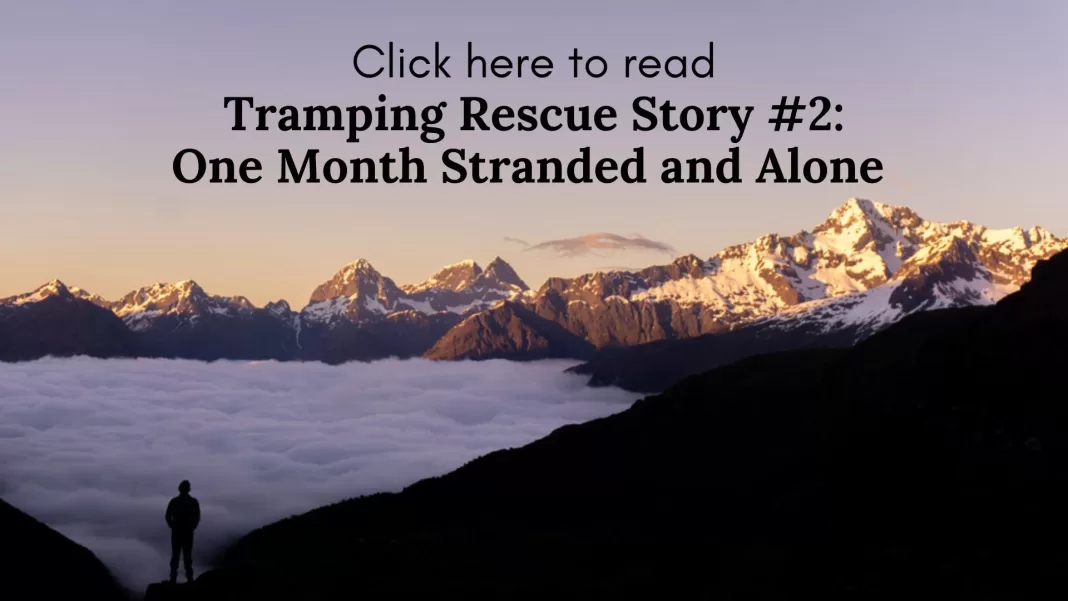This tramping rescue series recounts emergencies in the backcountry and how people respond. So far we’ve covered medical events like widow-maker heart attacks, as well as hypothermia and eye injuries. I find these kinds of stories fascinating. Hopefully you enjoying reading them and learning from others’ experiences as well!
This article, number five in the tramping rescue series, covers ankle injuries and hypothermia. Thanks to Sonia and Toni for sharing their stories for this article!
Tramping Rescue Story: Injured ankle & hypothermia with children
Submitted by Sonia Barrish @backtothewildnz
Labour Weekend, 2017
We’d planned a four day trip on the St James Walkway with my one year old, husband and mother-in-law. This was my first multi-day trip since having my first child (although we’d done some overnighters and lots of day hikes with her).
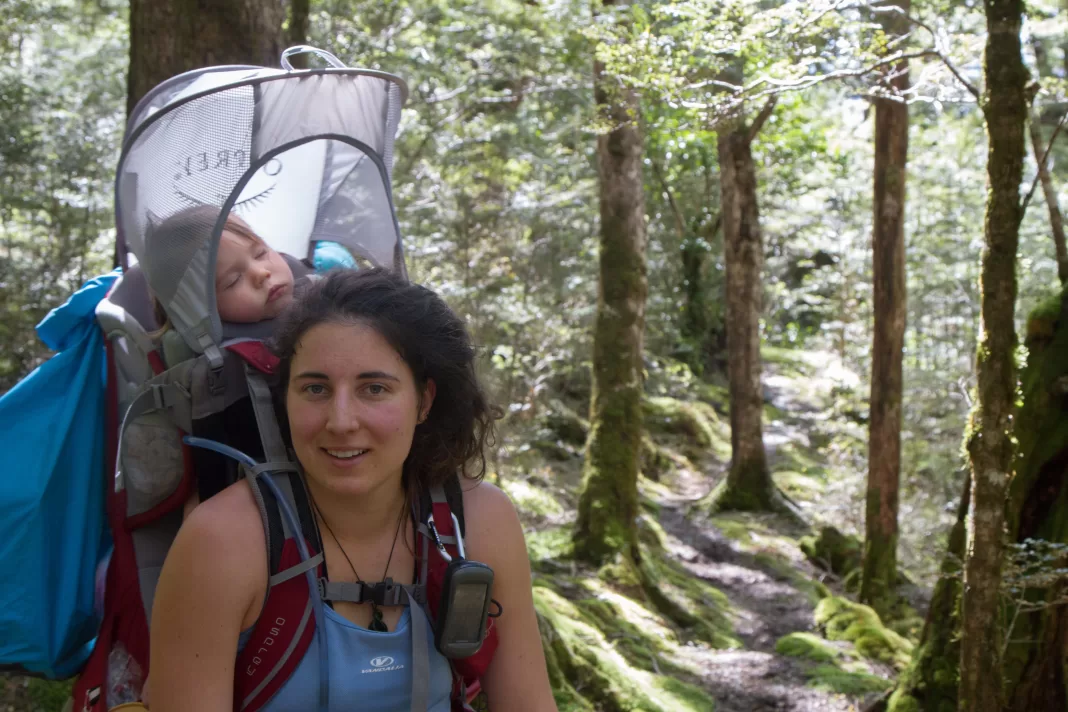
The first two days went well, staying at Ada Pass and Anne Huts. But on the third day, the weather turned with heavy rain. Not far from our next hut I twisted around to look behind me, and that was literally all it took to injure my right ankle. I had Miss 1 on my back, along with our gear, which probably exacerbated things. Back then my body probably wasn’t as used to carrying such heavy loads as it is now!
My ankle was quite sore, but I could still walk (albeit slowly). We continued past Boyle Hut (which was full) and pushed on to Magdalen Hut. By the time we got to the hut, the adrenaline was wearing off and my ankle was really sore. Magdalen Hut was also busy so we tented.
Attempting a self-rescue
In the morning my ankle was slightly better. After about 30 minutes walking, we taped it up and tied a small piece of log under the heel of my boot. This shortened my Achilles and was much less painful to walk on. I had some pain relief. We’d done all we could. I was optimistic I’d be able to walk the 11.5km out, even with the forecast rain.
But I hadn’t factored into account how slow I was. When I checked the GPS, we’d only made it 2km in two hours, which was ridiculous. The realisation of exactly how slow I was going really hit home. We weren’t going to make it out of here. The weather was worsening. It was getting really cold. I knew we’d have to push the button.
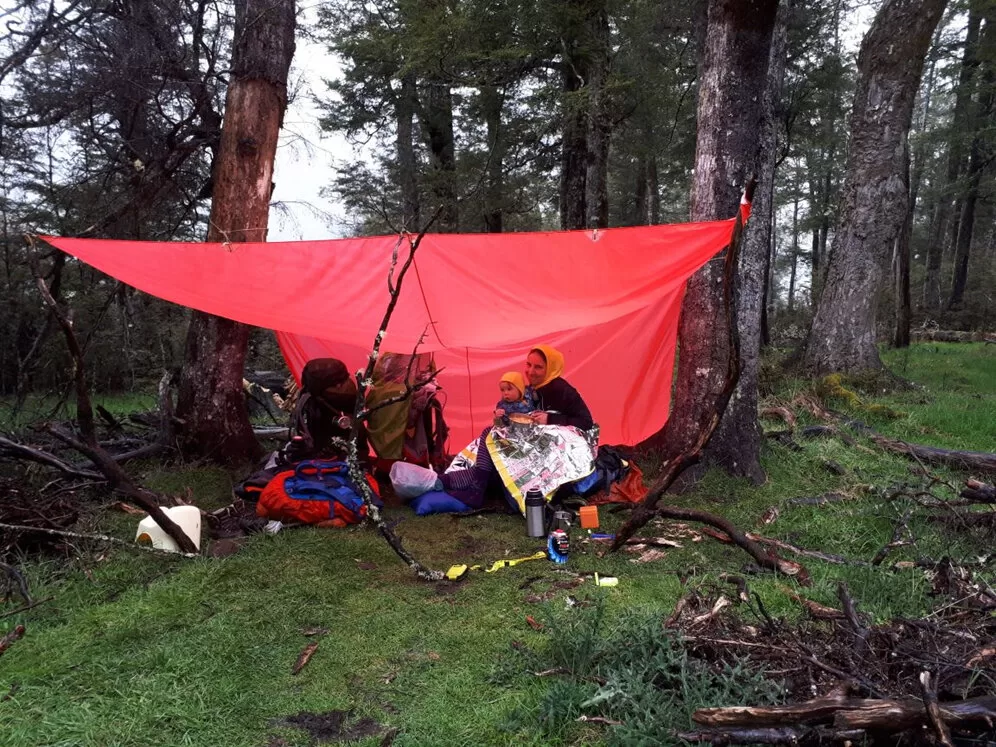
We walked another 5-10 minutes to a clearing for the helicopter. We sat down and set up the tarp shelter. Then we set off the PLB and waited. I took off my wet outer-layers and snuggled into an emergency blanket to try and stay warm. We’d had some hot food in a glass thermos, but in all the kerfuffle it had broken.
After an hour we heard the helicopter coming. I was impressed by how quickly they responded. But I didn’t realise that we weren’t out of the woods yet.
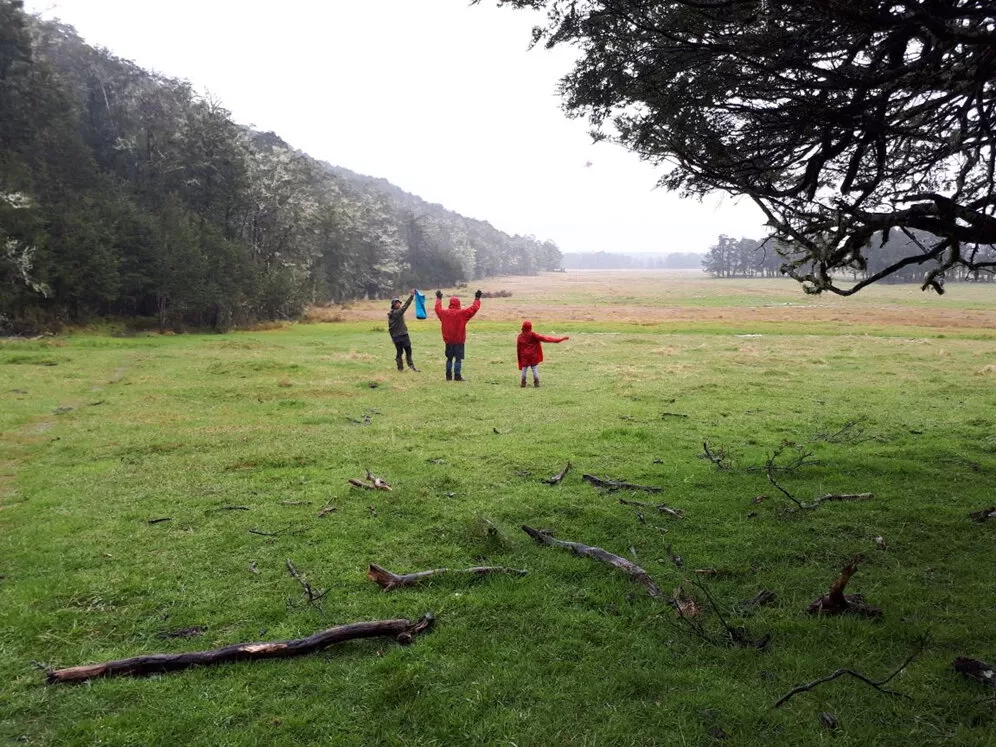
Hypothermia sets in
The paramedics landed and asked a lot of questions I couldn’t answer. My family answered for me. They could see everyone was starting to get wet and cold, and the weather was worsening. They decided to airlift my husband, and two other trampers who’d stayed to help us, out to the cars before coming back for me. I don’t think they realised at that point quite how cold I was, they just saw a stable ankle injury.
One of the paramedics stayed behind with me, my mother-in-law, and Miss 1. He quickly started to try and warm me up, realising the reason I couldn’t answer their questions was that I was actually moderately hypothermic.
Hypothermia can set in so quickly and quietly. I’d been so focussed on the injury and trying to keep my baby comfortable. I hadn’t noticed my symptoms. My clothes were damp, my feet drenched from river crossings, and I hadn’t had any hot food or drink. By the time the other crew came back, my body temperature was 31 degrees.
They flew us to Christchurch Hospital. I was dopey because of the cold. By the time I got to the hospital my body temperature had recovered to normal, but I was still delirious which made the nursing staff nervous. I still couldn’t talk properly or answer their questions. It took quite a while for my speech to come right, even once I was warm.
Recovery
The Achilles injury healed quite quickly in the end – it was only a minor tear. But a minor injury with weight and rough terrain can still be quite serious, especially with kilometres to walk until safety. I was on crutches for a few weeks and started slowly weight-bearing two weeks post-injury.
Lessons learnt
- PLB: we’d bought this while I was pregnant, but I now don’t go anywhere without it, especially tramping with kids.
- Shelter: although we carried a tent, some fellow trampers let us use their tarp shelter while waiting for the helicopter. We’ve since bought a tarp shelter (with sides) for ourselves. It’s also an indispensable piece of our kit.
- Hypothermia: I now know how quickly the cold can set in, especially when you’re wet (even wearing merino like I was). I’m very strict with my kids especially and change them into dry clothes quickly when needed.
- Freak accident: accidents like this ankle injury happen, sometimes in the bush, sometimes in town or at home. There’s not much you can do to prevent them, other than be prepared.
- What to do after activating the PLB: It can be such a tough decision to push the button on the PLB, that you don’t really think about what happens afterwards while waiting for help to arrive. You should still monitor the situation and take action as needed. You never know how long it will take rescuers to reach you, and the situation can still worsen even if you’ve activated the beacon.
The paramedics told us that we’d done everything right, but that we should have pushed the button at the hut rather than trying to walk out and risk hypothermia. But for me personally, I didn’t feel justified pushing the PLB for what seemed like a mild injury. Even now in retrospect, I know I would still struggle to push the PLB from the safety of the hut. I needed to try to realise a self-rescue wasn’t possible.
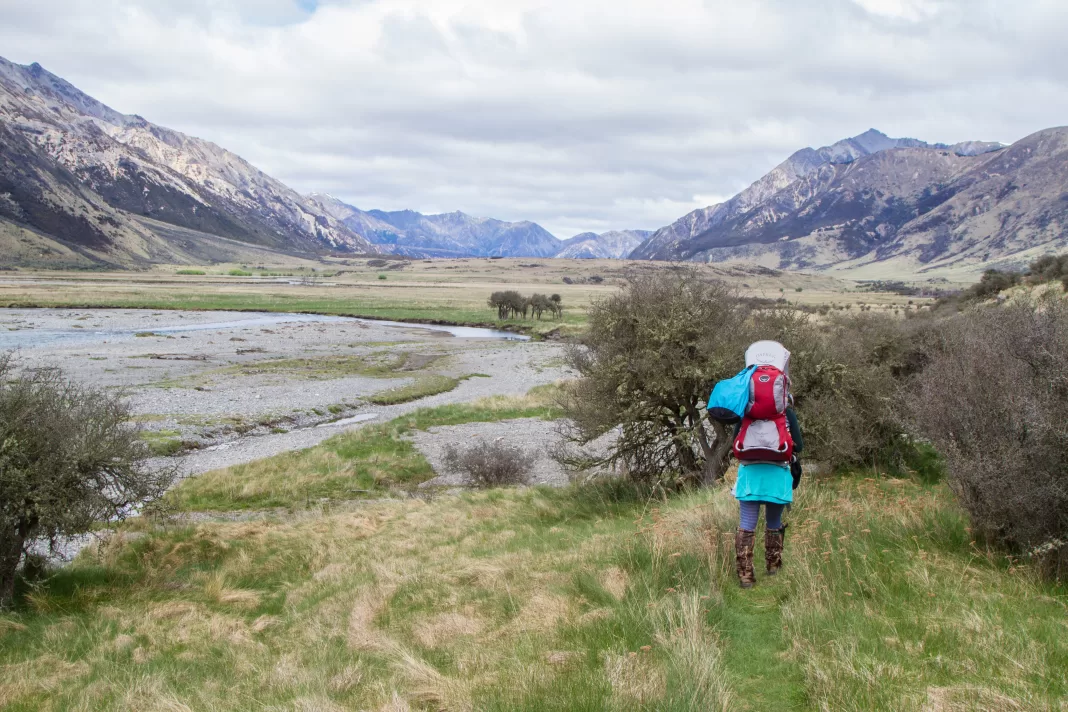
Tramping Rescue Story: Snapping your ankle tramping with children
Submitted by Antonia O’Donnell @wander.full.adventures
February 2021
My husband and I were on a family tramp up the Richmond ranges in the Nelson/Marlborough area with our two children (8 and 9 years old) and our dog. The first two days to Lake Chalice and Mid Goulter Huts went smoothly. But day three (of four) is when things turned to custard.
We’d planned to hike from the wasp-infested Mid Goulter Hut to Lower Goulter Hut, and then out to our car. It was only 8km, but at 3.5km everything turned to shit.
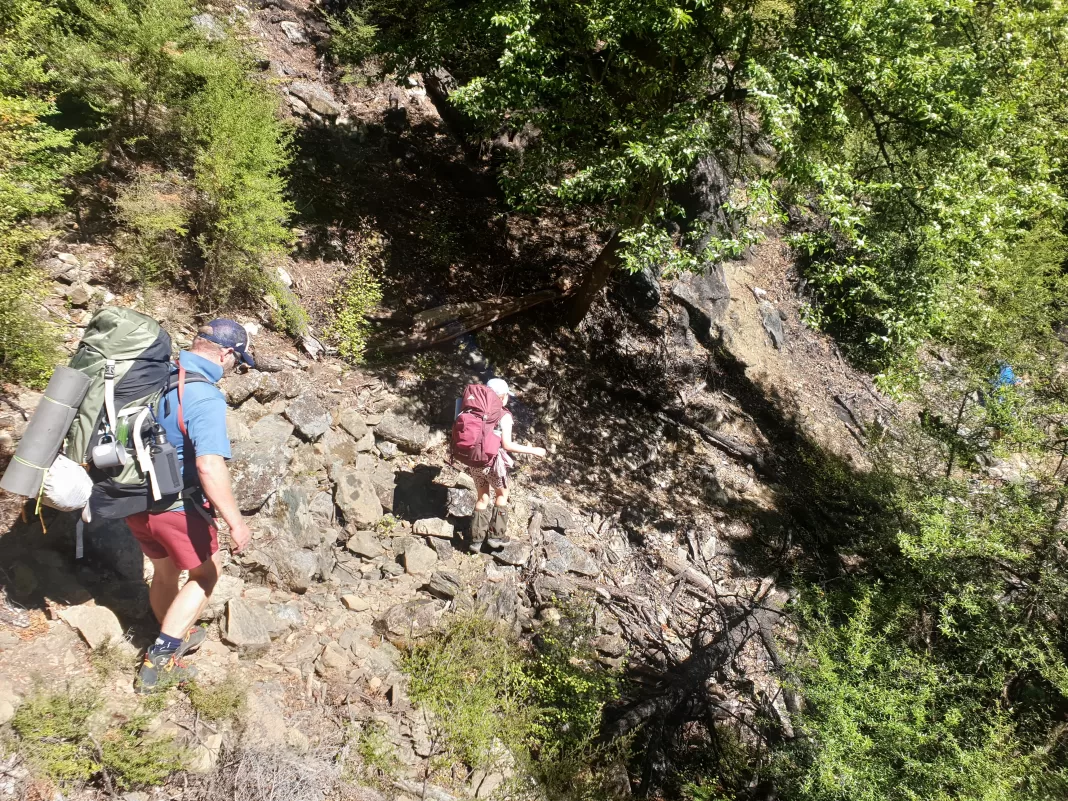
Oh snap
Like a lot of New Zealand tracks, the route was rough underfoot. At one point I stepped onto a tree root running vertically along the track. Before I had time to react, my ankle folded over and I heard a loud crack!
I instantly knew I’d broken my ankle. We sat on the track waiting for the pain to settle down. We had some snacks and drinks, but the pain didn’t improve.
I tried to stand up, but it felt like shards of glass in my ankle. I couldn’t move it. We wanted to avoid having to use our PLB if at all possible, but with me completely immobilised and with two kids and the dog to think about, we couldn’t find an alternate solution that felt safe.
Pulling the pin
After tears of pain and frustration, we knew we needed to use the PLB and get help. We were in dense bush, so we looked at the map to see whether there was a nearby clear area for a helicopter to land.
My husband spotted a clear scree slope on the map, about 300m down the track. He took his own pack as well as mine to the clearing, then came back to get the kids and the dog.
I had been carefully trying to move down the track. But the pain of “hopping” sent the most horrific pain through my ankle, like broken shards of glass piercing my ankle joint. I ended up contorted, crossing my damaged right ankle high over top of my left leg, then slowly shuffling my bum down the track. If anyone had come along it would have looked like something straight out of The Exorcist.
Once my husband finally made it back to me he could only laugh – there wasn’t much more he could do to help me. After an excruciating hour, we finally made it 300m down the track to the kids who were waiting patiently with the dog, trying hard to avoid the thousands of wasps.
Calling for help
Then it was finally time to set off the PLB. Our situation hadn’t gotten any better, and the last hour had confirmed our decision. It would be near impossible for me to manage the 4km to the next hut, let alone walking out to the car the next day.
I wasn’t prepared for how emotional it would feel setting the PLB off. After more tears (from me), we started to get ourselves organised while waiting for the sound of a helicopter.
Some of the things we did while waiting for help to arrive were:
- Made sure the car keys were in my husband’s pack. We knew he would have to walk out as they wouldn’t take the dog on the helicopter.
- Talked to the kids about what was about to happen to try and keep them calm.
- Lighten my husband and son’s packs, knowing that they would probably be walking out. We made sure they had the extra food, tents, first-aid kit and water.
- Put our bright pack-covers on our packs and placed them in the clearing as something easily visible for the helicopter pilot.
And then we waited for that sound of a helicopter echoing over hills.
Help arrives
After just over one hour from setting off the PLB, help arrived. My husband took the kids into the clearing to wave to the helicopter. We wanted to lighten the situation for the kids, and also show the paramedics that the kids were fine. We knew it would be a tense situation heading to a call that involved kids, not knowing if one of them was hurt.
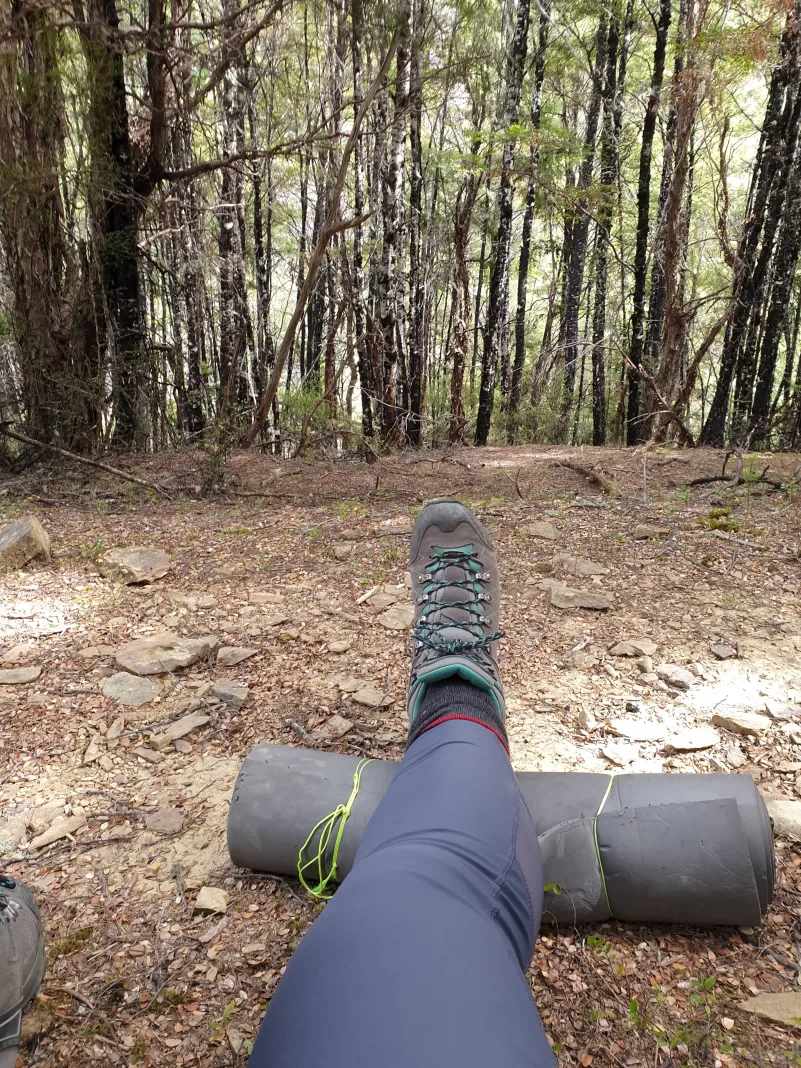
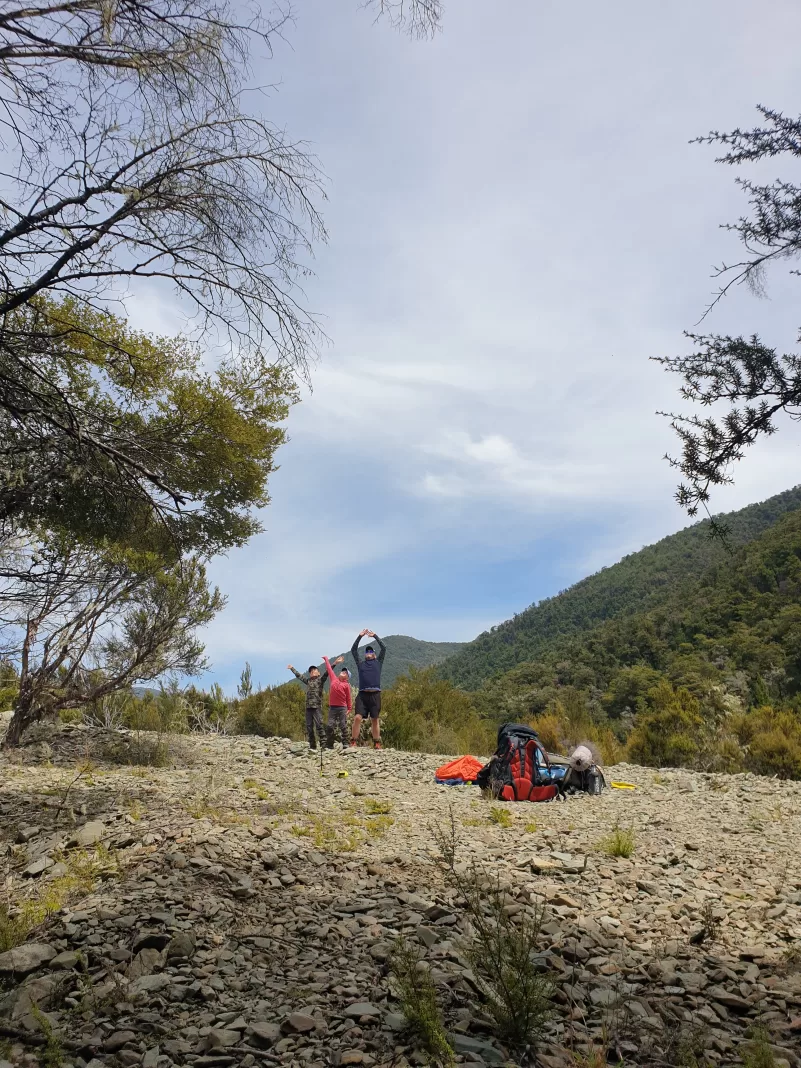
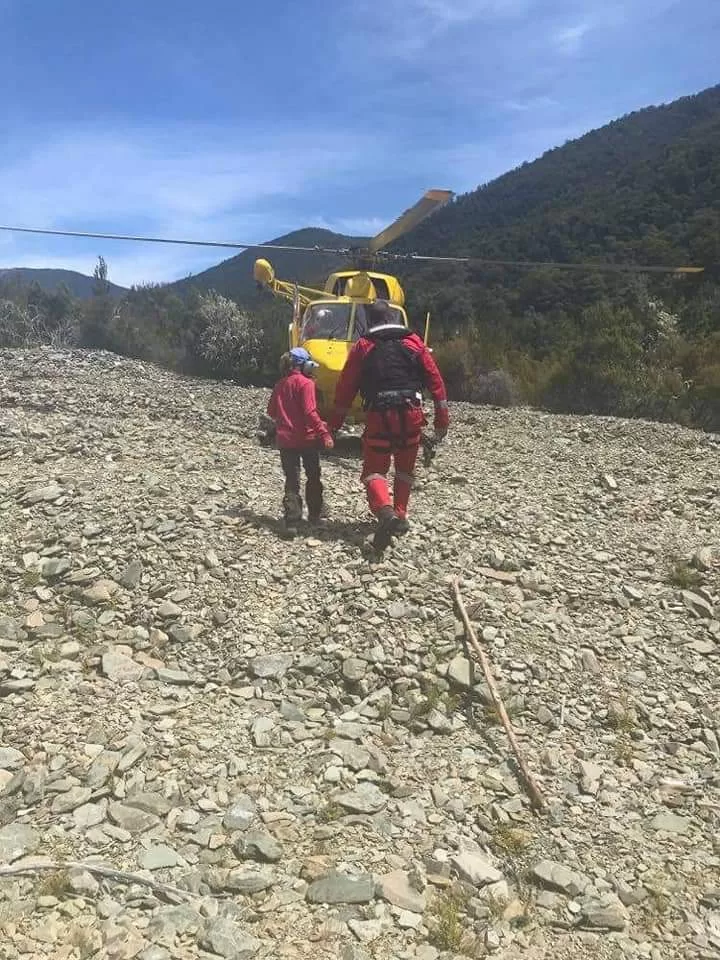
So finally after nearly three hours from the initial injury, help had arrived! Thank god!! Trying to keep calm and rein in the tears, we were greeted by some incredible responders who kept us at ease the whole time. They joked with the kids and patted the dog who was a tad unsettled.
After assessing me and confirming that I had badly damaged my ankle, they put a line in to administer pain relief and secured my ankle for transport.
We talked to the team about our options and because they could not take the dog, we settled on my youngest (our daughter) coming out in the helicopter with me, while my husband and son walked out with the dog. This was partly because our son who has ASD was too scared of the noise of the helicopter, so there was no way he was getting onboard.
The rescue team were surprised we’d already sorted all our gear. Apparently this can often be what takes the longest in a rescue mission. The rescuers re-set our PLB so my husband could carry it out with him just in case. They also gave my husband some antihistamines for the wasp stings he’d acquired.
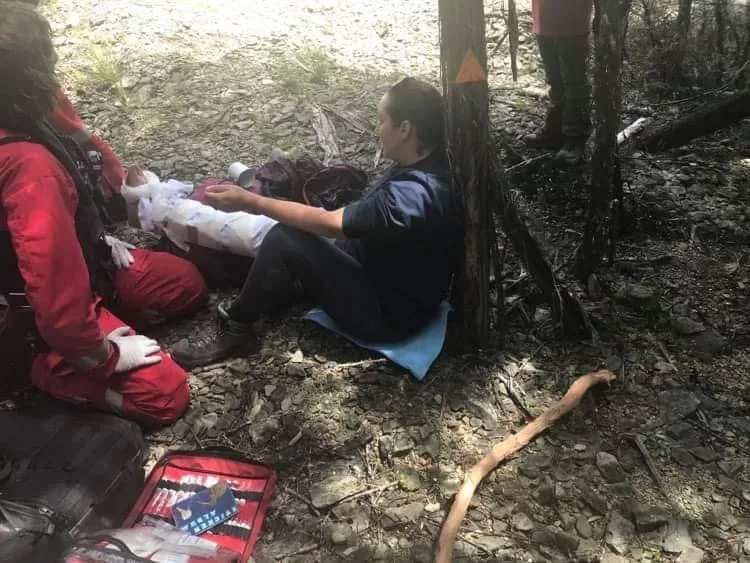
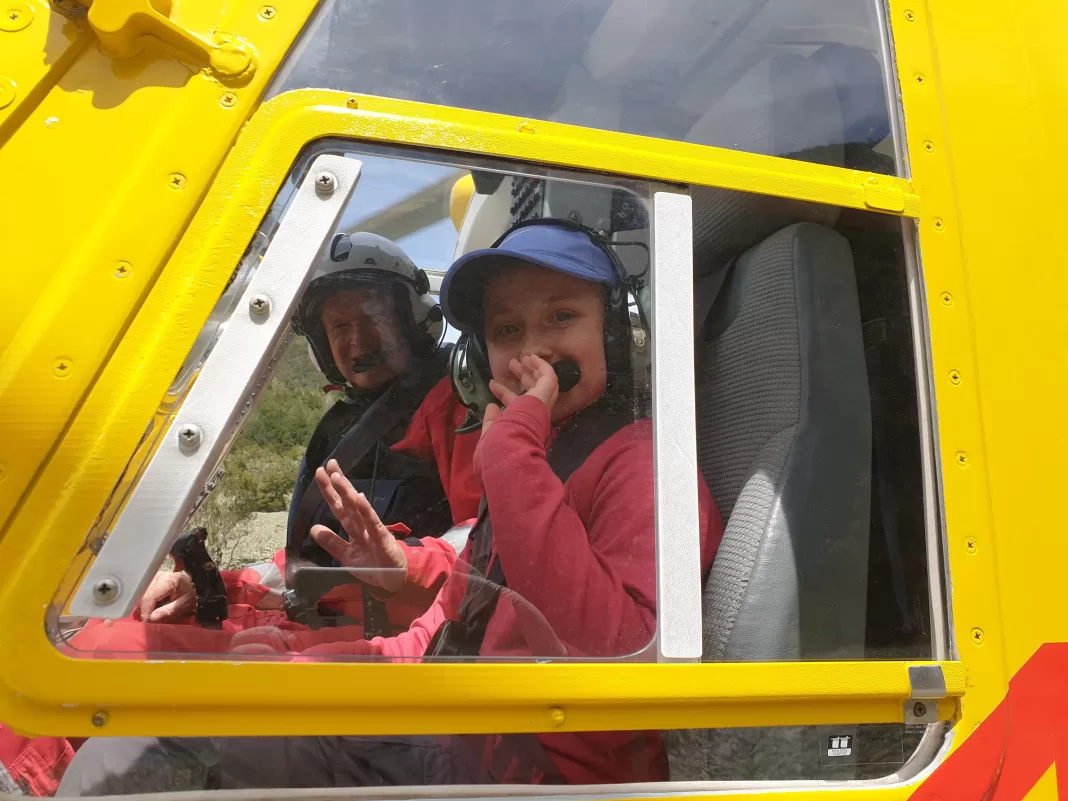
Helivac
Now it was actually time to get off the mountain. As we lifted off waving goodbye to my husband and son below, all I could hear was my daughter in her tiny voice saying “this is awesome!!”. She was given the royal treatment, sitting right up front with the pilot, wearing her own headset.
That is when the tears really set in. The emotions truly took over while seeing my husband and son waving goodbye and quickly become tiny dots on the mountain-side. The whole situation felt very emotional and real. The responder giving me medical treatment was amazing at wiping the tears away and reassuring me that we’d made the right call.
Only nine minutes after take-off, we were already landing at Nelson Hospital. We were greeted by medical staff and a very tearful mother-in-law who had been waiting to hear what had happened. After x-rays and scans, we found out I hadn’t broken any bones, but instead had torn every possible ligament in my ankle (which is what I could hear snapping), as well as some intense soft tissue damage.
It took nine long months and many, many physio session for my ankle to heal. The damage was extensive and a MRI after the accident also showed shadows on the bone, which is when I learnt that you could bruise you bone.
Reality sets in
The 48hrs after the rescue, a few things really hit home about the gravity of using our PLB. Not only was it much more emotional for us than we had ever considered, but we also learnt how it had affected our family.
Both my father and my mother-in-law are our emergency contacts registered to our PLB. We have a facebook group chat with both of them, where we leave detailed trip intentions every time we go out. Once a PLB is activated, the responders try to contact the emergency contacts. My father was the one who received the call and answered their questions.
After hanging up, he had to make the horrible call to both my mum and mother in-law to let them know a situation was unfolding. They then had to wait to hear more. Was it one of the kids? How serious was it? The worst case scenario was running through their minds. The relief they felt when they heard it was me, not one of the kids, and “just” a leg injury brought a lot of tears. It was hard hearing how emotional and tense the ordeal had been for them.
TV Stardom
Only a few weeks later we received a call from a film crew, who asked for our permission to use footage from the day of our accident for a TV show called ‘First Responders’. I reluctantly agreed, worried how much of my swearing they’d caught on camera! You can check out the clip here (story starts 23.15 minutes in).
